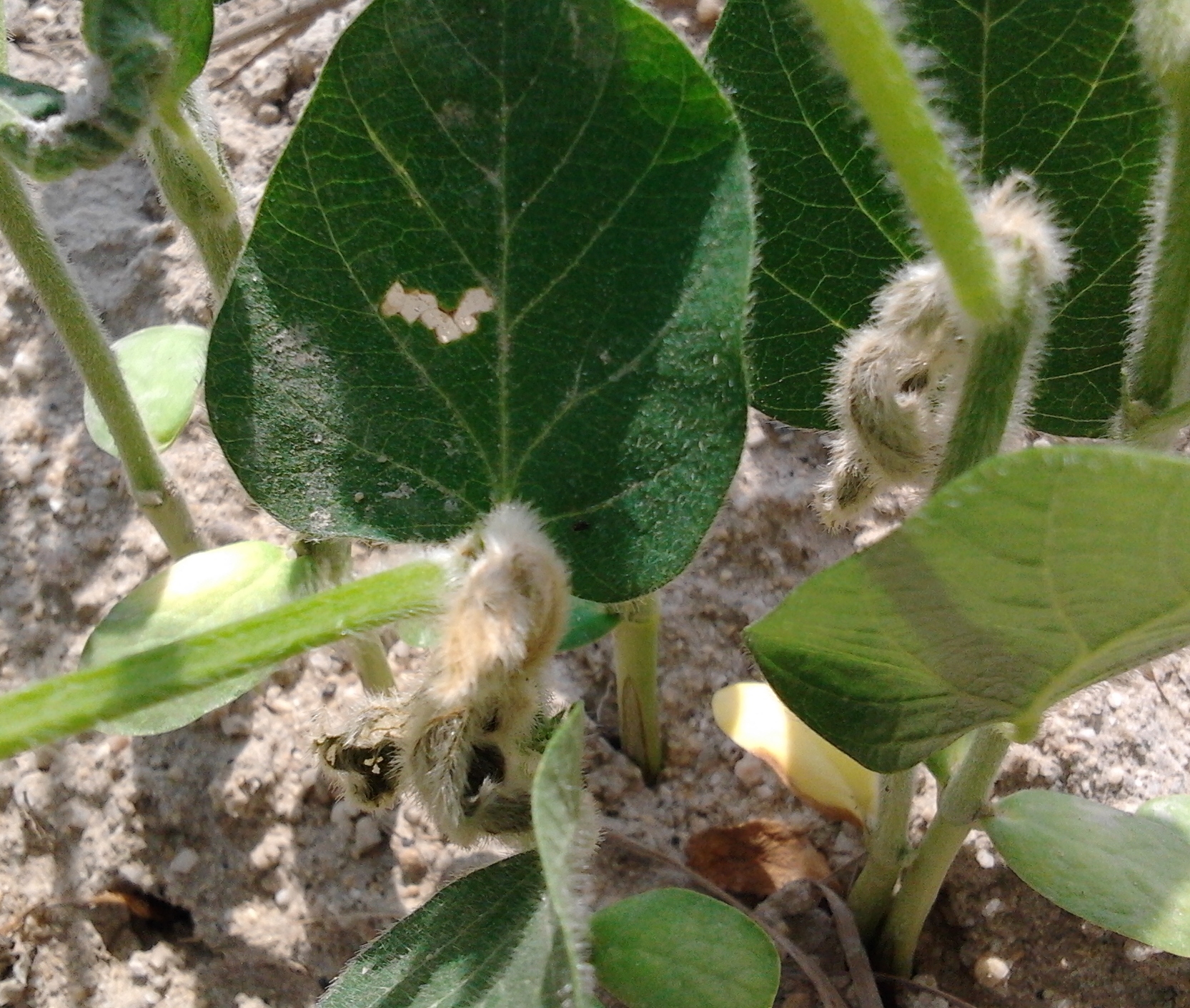
Grass blue butterfly larvae feeding results in windowing of the leaves (this is mostly cosmetic) and destruction of vegetative terminals.
The latter damage is of greater concern. Terminal death (tipping) can result in crops setting pods low to the ground where they are more difficult to harvest. Damage in most crops has been uneconomic to date.
Thresholds are determined at 25% terminal loss.
However after the current rain event dies down, growers should re-inspect crops for any terminal death symptoms. Other early signs of infestation of this pest include the small blue-winged adults (butterflies) flitting over the crop, and the presence of their relatively large (0.6mm diameter) pale blue eggs.
Grass blue larvae are often confused with hoverfly larvae. They are of similar appearance and size but hoverfly larvae are key aphid and whitefly predators.. Hoverfly larvae are ‘true fly’ larvae or maggots and they differ from grass blue larva in that they do not have a head capsule, true segmented legs and fleshy prolegs.
To confirm that you have pest (the grass blue larvae) and not the beneficial, flip them over to check for the (normally hidden) head capsule, 3 pairs of proper legs (at the head end) and 4 pairs of ventral prolegs. These legs are positioned towards the larva’s mid-line and are not visible from above. Another way to confirm identity is to place the larvae in a jar with some leaves – the hoverfly larvae will not eat the leaves but instead rear up to look for prey while the plant pest will eat the leaves.
Hoverfly larvae Grass blue butterfly larvae
Management
There are no registered insecticides for the control of grass blue butterfly in pulse crops. However, insecticides used for the control of helicoverpa will incidentally control this pest as well.
Article by Hugh Brier – DEEDI entomologist, Kingaroy
Some additional notes:
Larvae are often attended by protective ants which feed on excretions made by the larvae. A quick way to find the larvae is to look for ants.
Larvae can also be sampled with a beatsheet
Dipel SC is registered for all Lepidoptera pests in pulses (including soybeans).


.jpg)
.jpg)